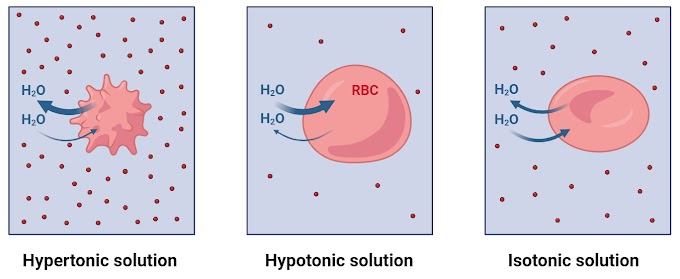ABO Blood Group Multiple Alleles
The ABO blood group system is one of the most well-known genetic traits in humans. It plays a crucial role in medicine, especially in blood transfusions, organ transplants, and pregnancy care. The fascinating part is that it’s controlled by multiple alleles—a genetic concept that adds complexity and diversity to inheritance patterns.
What Is the ABO Blood Group System?
The ABO blood group system is a classification method based on the type of antigens present on the surface of red blood cells. These antigens are specific carbohydrate molecules that act like molecular “identification tags,” helping the immune system distinguish between self and foreign cells.
In this system, there are two main antigens: A antigen and B antigen. A person with only A antigen is classified as blood group A, someone with only B antigen is blood group B, those with both are group AB, and those with neither are group O.
The presence or absence of these antigens is determined by a single gene, known as the ABO gene, located on chromosome 9. This gene produces enzymes that attach the correct antigen to the red blood cell surface.
Knowing a person’s blood group is crucial for safe blood transfusions, organ transplants, and certain pregnancy care, as mismatches can cause severe immune reactions.
Concept of Multiple Alleles
While many genes exist in only two forms (alleles), some genes have more than two possible variants in a population, a phenomenon known as multiple allelism. Each person still inherits only two alleles—one from each parent—but there can be more than two versions available in the population’s genetic pool.
The ABO system is a prime example of this. The ABO gene exists in three common allelic forms: Iᴬ, Iᴮ, and i. Different combinations of these alleles result in four possible blood group phenotypes.
Importantly, this system also demonstrates codominance—when an individual inherits both Iᴬ and Iᴮ, both antigens are expressed equally, producing the AB blood type.
Multiple allelism increases genetic diversity and creates more possible genotype–phenotype combinations than a simple two-allele system. This genetic variety influences population blood type distributions and has important implications for transfusion compatibility worldwide.
Genotypes and Blood Group Phenotypes
Each person inherits two alleles for the ABO gene—one from each parent—and the specific combination determines their blood group, or phenotype. Because there are three possible alleles (Iᴬ, Iᴮ, and i), several genotype combinations can occur, leading to the four main blood groups: A, B, AB, and O.
Blood group A can result from genotypes IᴬIᴬ or Iᴬi, meaning one or two copies of the Iᴬ allele produce A antigens on red blood cells.
Blood group B occurs with genotypes IᴮIᴮ or Iᴮi, where the Iᴮ allele(s) produce B antigens.
Blood group AB comes from inheriting one Iᴬ and one Iᴮ allele, expressing both A and B antigens equally—a classic example of codominance.
Blood group O results from having two copies of the i allele (ii), which does not produce any antigens.
This combination of multiple alleles and codominance explains the diversity of blood types observed in humans and plays a vital role in blood transfusion compatibility, ensuring safe matching between donors and recipients.
Importance in Blood Transfusions
The ABO blood group system is critically important in medical settings, especially during blood transfusions. If a person receives blood with antigens that their immune system recognizes as foreign, it can trigger a harmful immune response.
For example, if someone with blood group A (who has A antigens) receives blood with B antigens, their body may attack the transfused cells, causing serious complications. Because of this, blood transfusions must be carefully matched:
People with blood group A can safely receive blood from donors with blood group A or O.
Those with blood group B can receive blood from B or O donors.
Individuals with blood group AB can receive blood from any ABO type, making them universal recipients.
People with blood group O, who have no A or B antigens, can donate blood to all other groups but can only receive blood from other O donors, making them universal donors.
This compatibility is essential to prevent transfusion reactions and ensure patient safety during medical procedures.
Real-World Applications
Beyond transfusions, knowledge of the ABO blood group system has many practical uses. It is a key factor in organ transplantation, where matching donor and recipient blood types improves the chances of success and reduces rejection risk.
The ABO system is also used in:
- Paternity testing to help confirm biological relationships.
- Population genetics to study how blood group frequencies vary among different ethnic groups and geographic regions.
- Forensic science to assist in crime investigations when blood evidence is involved.
Overall, understanding the genetics behind ABO blood groups helps healthcare professionals make informed decisions and contributes to advances in medical research and treatment.
Conclusion
The ABO blood group system beautifully illustrates how genetics influences an essential aspect of human biology. Through the interplay of multiple alleles and codominance, it creates diverse blood types that are critical for safe blood transfusions, organ transplants, and various medical and scientific applications. Understanding this system not only deepens our knowledge of human inheritance but also underscores the importance of genetics in everyday healthcare decisions.
Some Short Questions and Answers
1. What are the main blood groups in the ABO system?
A. A, B, AB, and O.
2. How many alleles control the ABO blood group?
A. Three alleles: Iᴬ, Iᴮ, and i.
3. What does codominance mean in the ABO system?
A. Both Iᴬ and Iᴮ alleles are expressed equally in AB blood group individuals.
4. Why is blood type compatibility important?
A. To prevent immune reactions during blood transfusions and organ transplants.
5. Can someone with blood group O donate to any blood group?
A. Yes, they are universal donors because their blood has no A or B antigens.






0 Comments